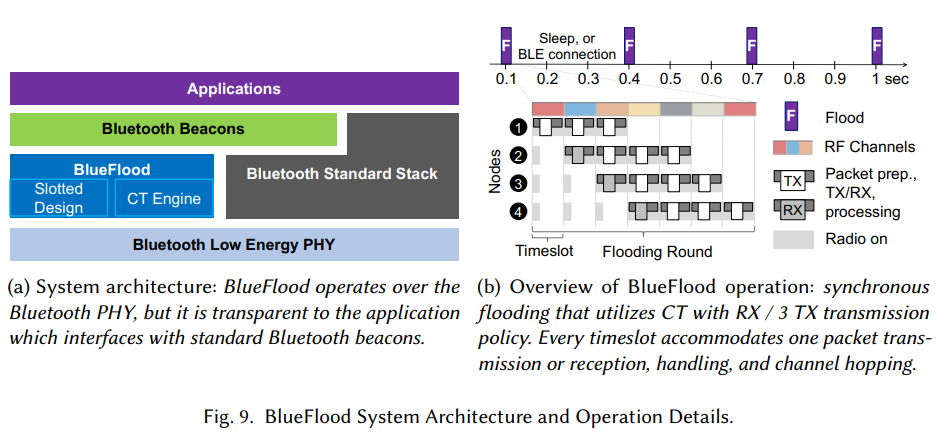There’s new research BlueFlood: Concurrent Transmissions for Multi-Hop
Bluetooth 5 — Modeling and Evaluation (pdf) that looks into using concurrent transmissions (CT) with Bluetooth.
Today’s Bluetooth devices use advertising, GATT connection and mesh. Advertising occurs over three channels to reduce the affects of wireless interference. When more than one device advertises at the same time, the data is lost. However, advertising takes of the order of 1ms so the chance of collision is usually small.
In contrast, BlueFlood uses concurrent transmissions (CT) that purposely synchronise transmissions such that if colliding packets are tightly synchronised and have the same contents, the resulting signal might be distorted, but highly probable that they do not destruct each other. This is used with the Glossy flooding protocol and 40 rather than 3 advertising channels.
CT-based protocols achieve enormous performance gains in terms of end-to-end reliability, latency and energy consumption even under harsh interference conditions

Concurrent transmissions are challenging using Bluetooth because transmissions need to be synchronised down to 250ns. Nevertheless, the researchers show this is possible using standard Bluetooth PHY and commercial Nordic SoCs. They achieved an end-to-end loss rate below 1% and managed to receive the signals on a standard smartphone. While the mechanism was fragile it was found to be viable.